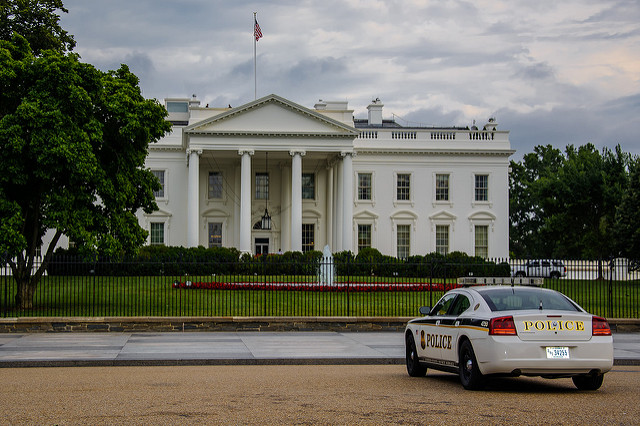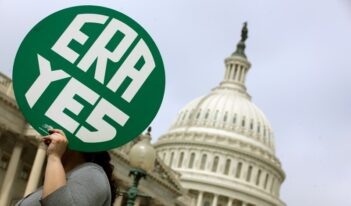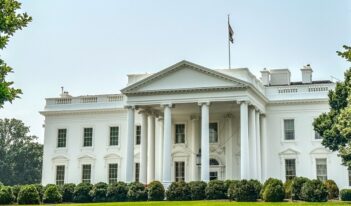
Insights gleaned from past federal enforcement efforts can inform future locally driven improvements.
Over the last few years, a spate of high-profile deaths at the hands of police officers, and concomitant claims of racial profiling, have prompted calls for widespread reform of local law enforcement agencies. The issue of police brutality or racially biased policing is not new, but the increased awareness of the issue has prompted unprecedented bipartisan calls for criminal justice reform. Throngs of protesters have taken to the streets nationwide to call for an end to police brutality, while others have held town halls addressing police brutality, or lobbied their local and state legislatures to implement criminal justice reforms.
By 2016, the country seemed poised to experience a “criminal justice revolution,” as many municipal police departments and local officials promised the communities they served that they would implement reforms aimed at combatting racial profiling, increasing police accountability, and addressing factors that contributed to mass incarceration.
Yet, during his campaign, President Donald Trump effectively took a swipe at these efforts. He consistently referred to himself as the “law and order” candidate, a troubling moniker when one considers the impact that President Richard Nixon’s “law and order” policies—which relied on racially charged messaging targeted toward white voters—had on communities of color.
Now, criminal justice reform advocates are pondering the fate of the federal government’s police reform efforts under a Justice Department (DOJ) led by U.S. Senator Jeff Sessions (R-Ala.), who was recently confirmed as U.S. Attorney General. And although the fate of these efforts may appear murky, a review of past DOJ-initiated reform efforts can offer some clarity by providing a window into how a “criminal justice revolution” can indeed continue to move forward in the years ahead.
For the last two decades, the DOJ has worked to bring systemic change in several local police departments through its “pattern or practice” authority, which gives the U.S. Attorney General the authority to investigate whether police departments are engaging in unconstitutional patterns or practices, such as subjecting racial minorities to excessive force. If, after a formal investigation, the DOJ determines that there is indeed a pattern of constitutional violations, it has the authority to sue the local police department to seek injunctive relief by forcing the implementation of certain reforms.
Generally, reforms initiated under the DOJ’s pattern or practice authority have been aimed at addressing systemic issues that contribute to the pattern of unconstitutional practices, including revamping the police department’s investigation process related to excessive uses of force, implementing early warning systems that identify problematic behavior among officers, and developing policies to eliminate racially biased policing.
Local police departments in cities such as Los Angeles, Pittsburgh, Washington, D.C., Cincinnati, East Haven, Cleveland, and Detroit have all had investigations and sustained findings of patterns of constitutional violations resulting in consent decrees—or negotiated agreements—to reform departmental practices.
This past year, the DOJ announced findings that the Baltimore Police Department engaged in a pattern or practice of constitutional violations, including disproportionately stopping, searching, and arresting African-Americans, as well as subjecting racial minorities to excessive force. Before the end of the Obama Administration, the city of Baltimore and the DOJ signed a consent decree that aims to address these violations, although a judge still needs to approve the decree. The Obama Administration also released a report detecting a pattern or practice of unconstitutional use of force by the Chicago Police Department. Chicago officials have said they would work with the federal government to reach an agreement to address these findings, but the status of federal intervention in Chicago and Baltimore are uncertain under the Trump Administration.
Prior to the mid-1990s—which was when the Clinton Administration became the first administration to enforce the DOJ’s pattern-or-practice authority—options for systemic police reform were limited. Regulation of police behavior mainly relied on U.S. Supreme Court decisions interpreting the Fourth and Fifth Amendments. Among these decisions was Wolf v. Colorado, under which the Supreme Court adopted a rule that excluded evidence gathered in violation of the Constitution. Proponents of this rule have argued that it deters police officers from engaging in unconstitutional searches or seizures, as well as from obtaining unconstitutional confessions. Yet despite the consensus that there are virtues associated with this controversial rule, deterring police misconduct is not one of them.
Other forms of police accountability—such as civil tort suits, and criminal prosecution of polices officers—address individual instances of police misconduct. But they are also inadequate to solve systemic or organizational issues. The primary function of individual civil tort and criminal suits is to address past conduct—not to evaluate and change problematic police practices. In contrast, the DOJ’s pattern-or-practice authority is rooted in efforts aimed at changing the practices that contribute to constitutional violations, such as excessive use of force or racial profiling. This form of government authority therefore offers a distinct, forward-looking type of accountability.
However, police reform under the DOJ’s pattern-or-practice authority still has its shortcomings. One salient critique is that, because the U.S. Attorney General has the authority to investigate police departments and initiate suits for injunctive relief, the level of enforcement varies depending on the political administration in power at the time.
One study, for instance, showed a precipitous drop in the number of DOJ investigations carried out during Republican President George W. Bush’s second term, notably finding that the “DOJ did not enter into a single negotiated settlement during this time period.”
During the Bush Administration, it was common for the DOJ to send “technical assistance letters,” which offered advice on how a police department could improve officer accountability, but were not binding like negotiated settlements. In contrast, the number of DOJ investigations rose again during President Barack Obama’s first term, and the Obama administration entered into eight negotiated settlements.
Now, looking ahead to the Trump Administration, it is certain that U.S. Attorney General Jeff Sessions will not vigorously enforce the DOJ’s pattern-or-practice authority. In fact, although many criminal justice advocates extol the merits of consent decrees over technical assistance letters, Sessions has been highly critical of consent decrees, calling them “undemocratic” and an “end run around the democratic process.” Thus, advocates are right to expect less federal intervention over the next four years.
A decreased federal role is less than ideal, but it is not alarming for several reasons. First, among the approximately 18,000 federal, state, county, and local law enforcement agencies in the United States, the DOJ has been able to investigate only about 60 of them—a figure that has already raised questions about the deterrent effect of the DOJ’s pattern-or-practice authority on certain jurisdictions.
Second, the existing negotiated agreements are incredibly rich sources of information. Each investigation involved months of interviewing witnesses and assessing a police department’s policies and practices. Thus, we have good information on what types of police practices do not work. This Administration should engage in information sharing so that other jurisdictions can learn from these agreements.
Finally, previous administrations have laid a valuable groundwork that local officials can use to build on and implement change in their own jurisdictions. Criminal justice traditionally has been a “local” issue, and local officials are still accountable to their constituents, who are increasingly calling for change. For example, New York City’s Mayor Bill de Blasio ran on a platform to end the city’s controversial practice of “stop and frisk,” which resulted in hundreds of thousands of stops of mostly Black and Latino men.
Similarly, the Greensboro Police Department in North Carolina ended certain practices, such as stopping motorists for minor traffic infractions like broken taillights, because these practices exacerbated police-community relations and led to arbitrary enforcement. Local jurisdictions must look to each other to determine what changes might work, and the federal government should support these changes through competitive grants.
If the Trump Administration exhibits a good-faith effort to ensure constitutional policing in our nation’s police departments, the federal government should play a valuable role in working with local communities. The federal government should also provide increased funding to communities to experiment with novel ways to improve both their police departments and the relationships between community members and the officers who serve them.
This essay is part of a fifteen-part series, Regulating Police Use of Force.




